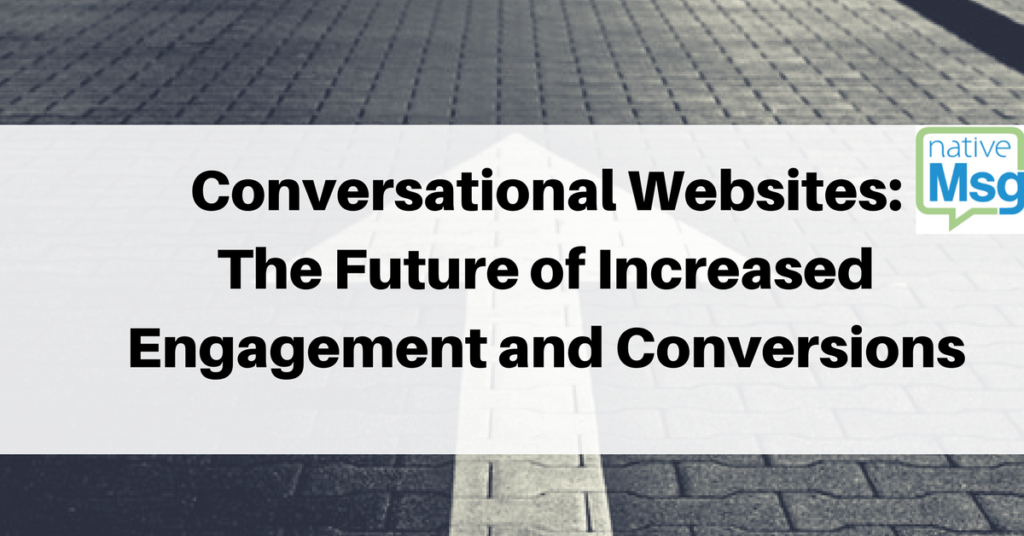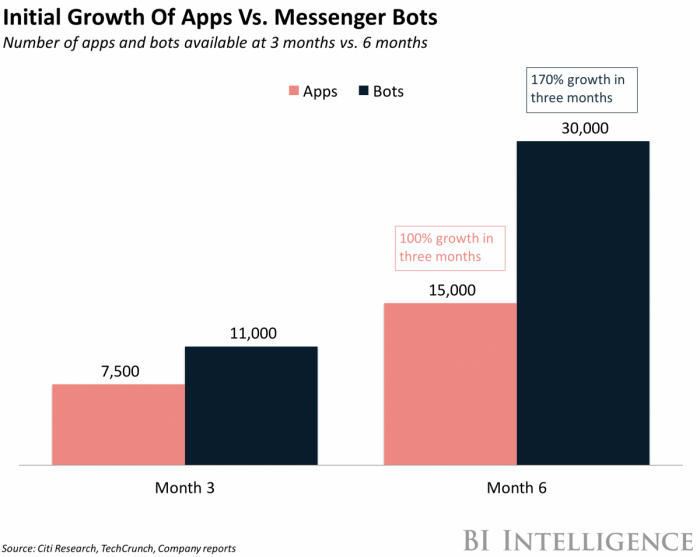
It’s 1AM and your plumbing goes. Grey water (everywhere) and you now have no bathroom. Your newborn is crying for the fifth time in an hour, your partner is away on a trip. You, of course, need a plumber, like, yesterday. But right now, you’re asking how in the world does this have to do with conversational websites?
Oh, plenty.
What I would have given for the kind of site you can make with conversational, intelligent technology. As the, ahem, “heroine” of the above scenario.
If a local plumber offered it, I could have hopped onto their site, sent a video and audio by phone to the site, explaining and showing the problem. I would have heard back instantly with a preliminary diagnostic, and how I could troubleshoot while I awaited the real hero of the moment (here’s to you, plumbing hero!). I could have gotten an estimate right then, and a much needed appointment for when I would see my plumbing hero. I may have even gotten a few tips while waiting, as in, it’s fine to use other water sources.
No dice.
It was a dramatically different, long night. Let’s just say, we had the good fun of purchasing all new towels and luxuriating in the deep satisfaction of cleaning, through the weekend.
And yes. I could go to messaging channels to find a bot right now that does something close. But c’mon, Google’s going to give me local plumbers in search. And with a crying babe in my arms, the last thing I want to do is take any more steps than I needed to (in grey water or online) to solve the problem.
Here’s the good news: Your customers need neverhave this hassle. Forward, consumer-facing conversational sites are upon us. Internal IT conversational bots can monitor, troubleshoot and provide updatese. Finally, conversion rates are like a throwback to booming 1980’s economic highs. What are you waiting for, again?
So here’s what you need to know:
Use Cases Show Strong Conversion and Engagement Rates

First, chatbot growth is substantial , from 30,000 to over 100,000 (on Facebook Messenger alone). But, the most striking reason to begin using on-site chatbots is the high conversion rate businesses have received with chatbots in messaging channels:
- The CTR for Messenger is 15 to 60 percent compared to the 5 to 10 percent for mailing lists.
- Adidas had 2000 users in one week, with 60% retention and 80% repeat use.
- Just Eat saw a 266% higher conversion rate with chatbots over all other social media channels.
- One in three consumers are willing to make a purchase with a chatbot, but per a USA Today piece, Forrester, Research,reports that only about four percent of companies are using one (as of 2017).
Are Chatbots “Smart Enough” for an Interactive Site?
Yes, they are.
You can use a rule-based chatbot to start with, and this is a smart enough solution because it can be designed with logical flows to create an easier, more efficient experience for simple goals. Chatbots designed with machine learning train data, so that repeat interactions causes the technology to learn and to grow.
The trick for companies is to grasp that a chatbot developer should nail the correct algorithm with the correct data set to achieve the highest results. When you read about advancement in AI, this is one of the most important facets, along with natural language understanding (NLU). Developers, scientists, organizations and designers are actively pursuing and perfecting this very process.
More importantly, to start, every organization considering a chatbot should have a crystal clear use-case for it. It’s not enough to add a chatbot for customer service. Instead, you must define specific goals. It’s the touchstone for developing a successful conversational UI.
A superbly functional and highly engaging conversational website (or chatbot in any channel) has undergone rounds of developer and user testing. It’s also been updated based on visitor interaction, to garner higher accuracy rates and smoother conversations.
But keep in mind, simplicity in form and functionality are always a good design and user experience choice. So that a site component, such as a replacement for a FAQ section, is going to be a an engaging and helpful addition to a site.
Subscribe to our Newsletter
What is a Conversational Site?
A conversational site is a conversational layer, akin to a chatbot, embedded on site. The technology also exists to create talking sites so that visitors can either text or speak to it. There are two main design options: a wholly conversational site, or a site that includes a layer of conversational UI:
You can design your site so that visitors aare greeted and prompted to interact in a conversation In fact, it can be text or voice based. Intelligent conversational sites learn the more users interact. This creates an astounding opportunity across industries.
The future of interactive sites can look like this:
Healthcare:
Users can interact with a virtual intake bot for diagnostics, prescriptions and questions. A HIPPA-compliant design can provide knowledgeable help and instruction based on past experience. A typical emergency care or 24 hour nurse call service may not notice a pattern in patient calls and symptoms, but an intelligent site can retrieve the pattern promptly:
It can look something like this: “You checked-in this time last year- and indicators show pollen levels are higher, let’s schedule an appointment for your allergies with your doctor today.”
A patient, supremely weary of allergies, can receive immediate care and appointment service. There’s also no wait time. A conversational site can serve multiple users simultaneously.
Retail:
The possibility of a virtual dressing room and stylist is here. A conversational site can be equipped and designed to create an extraordinary online shopping experience.
Instead of multiple steps searching sizing, reviews, pricing and finally reaching checkout, you can relay all of this information in one step, in just a few sentences. Or, let’s say you’re unsure of what you’re looking for and what a retailer offers, you can ask for suggestions for an event or occasion, or based on a trend you’ve seen.
You can upload your image and measurements and allow the chatbot site to offer suggestions on flattering styles, colors and filter results based on your request.
It’s conceivable, too, that the site can take a real-time image of you and virtually dress you in these selections. If designs run bigger or smaller, an intelligent, conversational site can take this into account and offer alternatives and tips and even divert the conversation to a local seamstress in the area to schedule a hem. It allows a new generation to experience the personalized service of yesterday, when a professional salesperson acted as assistant, concierge and expert.
Hospitality:

Let’s say you want to book a hotel. When you land on a site, you’re greeted with both audio and text. You can respond with either and you’re given a full-screen tour of rooms, accommodations and availability based on your schedule and budget. Again, for added service, a site canpartner with other companies, like airlines, to provide an even better experience.
Conversational Hybrid Site and Use-Cases:
If your organization wants to integrate a conversational layer within an existing site, again, that’s possible, too.
And, very importantly, it’s a move that liberates your organization from third-party parameters within messaging spaces. Though, alongside an onsite chatbot, you can still deploy one within social media and messaging spaces, too. (You can learn more on Chatbots for Facebook Marketing here.)
Internal Support:
In a report by Gartner, down the road, internal, chatbot initiated support will revamp the current structure:
Combine the use of chatbots and event-driven programming models that will watch for changes in state for existing enterprise databases and applications, to migrate business processes from user initiated to user response actions.
Scheduler or Customer Service Agent:
Instead of creating the all-too-unhelpful “help” section, you can integrate a chatbot as the first step in customer service and scheduling. Similar to live chat, but more accessible and prompt, a chatbot layer within a help page can support those hard to find questions and troubleshoot them, in lieu of a knowledge-base section or frustrating drop-down lists of support choices.
Conversational Layers for Ads and Emails
In addition to a conversational site, you can add this interactivity to any type of content:
- Landing page
- Banner ad
- Contact form
Conversational UI increases engagement, and placing it on key converting assets creates an amazing advantage for an organization. You’ll see increased leads and engagement. You can check out Chatbots Trends in 2018 to learn more about what’s coming in the new year.
Want to learn more about how a conversational site or component can create huge engagement, easier lead-building and better brand experience? Get in touch with nativeMsg for a customized solution for your business.
Free Trial
Get Started With RCS
Business Messaging!
Unlock the power of RCS and revolutionize your customer engagement.


